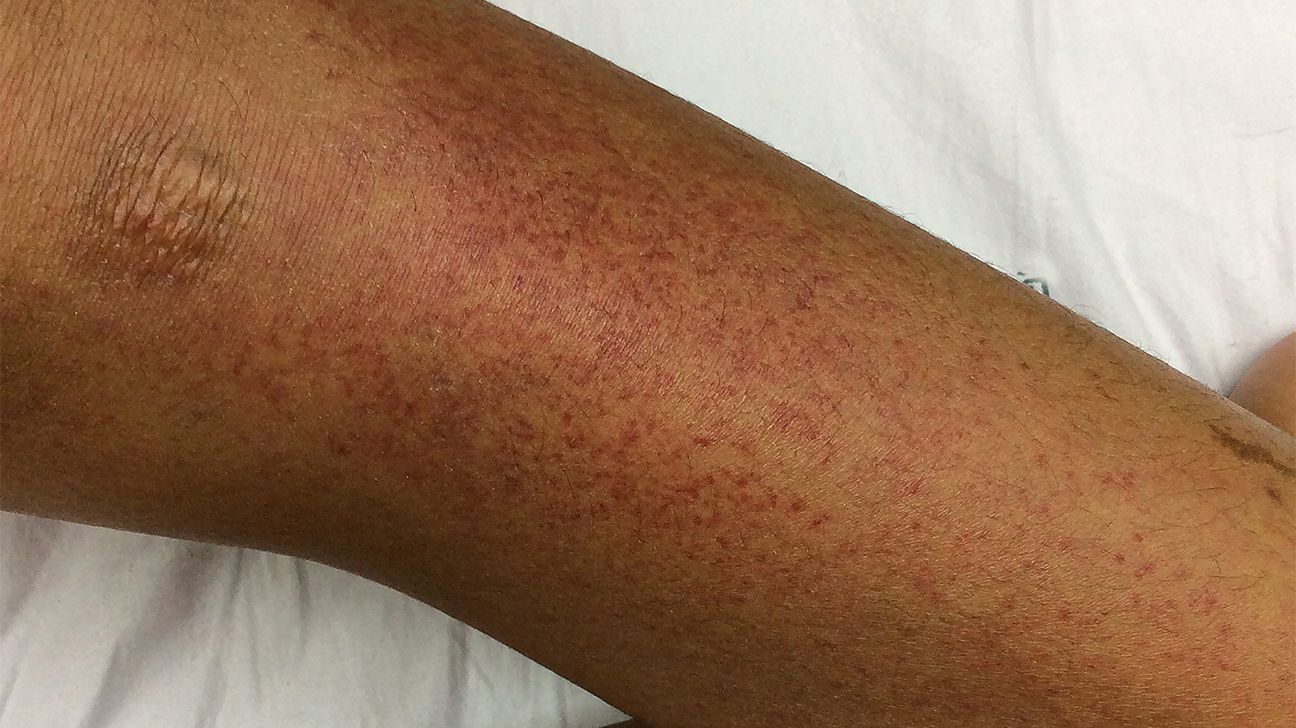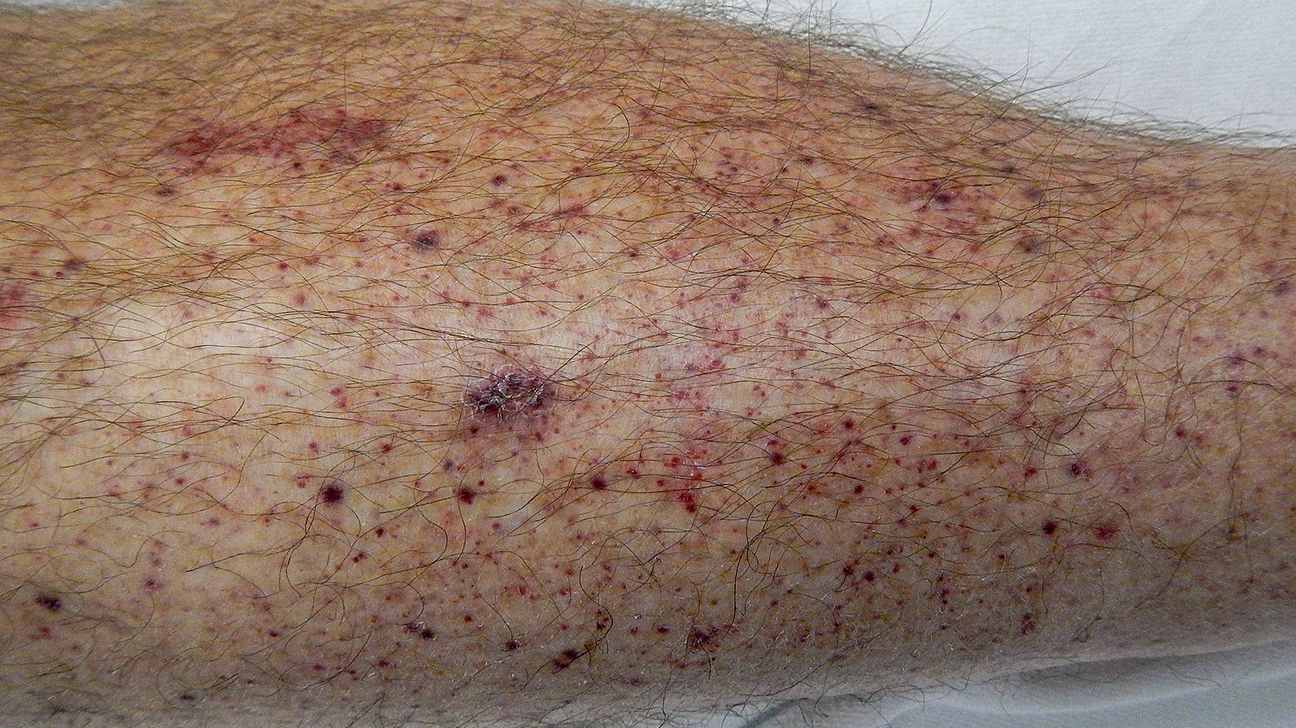Immune thrombocytopenia (ITP) affects how the blood clots and may result in various symptoms, such as unexplained bruises, frequent bleeding from the gums and nose, and fatigue.
Immune thrombocytopenia (ITP), previously known as idiopathic thrombocytopenia, is a rare blood disorder characterized by low platelet counts, which affect the blood’s ability to clot.
For many people, ITP doesn’t cause symptoms. When they do appear, platelet levels are often very low, which leads to excessive bleeding. This can result in symptoms like:
- small red bumps on the skin (petechiae)
- unexplained bruising (purpura)
- bleeding from the gums
- frequent nosebleeds
- heavy periods
- blood in urine or stool
- hematomas
- fatigue
A normal platelet count is needed to control bleeding throughout the body. Most of the time, the bleeding is contained underneath the skin and appears as a bruise, so you might think ITP-related symptoms as something else.
Other more serious symptoms of ITP can be related to more significant internal or external bleeding.
Some signs of ITP may seem unusual. We’ll walk through the common symptoms of ITP and cover which may indicate a need for urgent medical attention.
One of the most common symptoms of ITP is a skin condition called petechiae. These are small reddish bumps on your skin caused by bleeding from underneath.
Petechiae can look like a rash at first, but the bumps are slightly raised, scattered, and the size of pinpoints. They can also have a purplish tinge.


If you notice petechiae or any unusual rash, a healthcare professional can provide diagnosis and treatment.
Bruises are the result of injuries that cause capillaries to break just underneath the surface of the skin. Blood comes out of these broken capillaries, forming a pool. This creates black-and-blue bruises.
Bruises naturally fade over time as the blood reabsorbs into the body. They’re not usually cause for concern.
There can be many reasons for bruising, including:
- thinning of the skin, like from aging or another cause
- herbal supplements
- medications
- sun damage
However, you might notice you’re bruising a lot more easily, especially on your arms and legs. You might even wake up with bruises, or get new bruises without having been hurt.
Sometimes frequent bruising is a symptom of ITP. Low levels of blood platelets can make it more difficult for your blood to clot, causing the skin to bruise even after a minimal injury.
Bruises from ITP are called purpura. They’re usually purple. They can also appear inside your mouth.
When we think of the word “skin,” the gums may not come to mind at first. But ITP can affect this delicate skin too.
Gum bleeding from ITP may occur during dental work, like routine teeth cleaning or other dental procedures.
In severe cases, your gums could bleed from brushing and flossing.
You may attribute this bleeding to gingivitis (gum inflammation) instead of an ITP symptom. At your cleanings, your dentist may also notice bruises inside your mouth.
Nosebleeds (epistaxis) occur when the delicate skin inside your nose bleeds. Nosebleeds can be common and have a variety of causes, including:
- allergies
- colds
- sinus infections
- blood-thinning medications
If you find yourself having many weekly nosebleeds despite being well and keeping your nose moist, you may need to talk with a healthcare professional to determine the cause and get treatment.
Low platelet counts from ITP can affect your menstrual cycle, making periods heavier than usual.
While heavy periods might seem more like a nuisance than anything else, they can also lead to complications, such as anemia.
An occasional heavy menstrual cycle might not be a cause for concern. But if you begin experiencing a heavy period every month, talk with a healthcare professional.
The low platelet count associated with ITP can also cause bleeding in your urine or stools.
Blood in the urine typically occurs as a sign of infection. However, bladder infections often accompany other symptoms, such as:
- lower back or flank (kidney) pain
- frequent urination
- abdominal pain
If you don’t have any other symptoms of a bladder infection, blood in your urine could be an early indicator of ITP.
Blood in the stool is never normal. If you see blood in your urine or stools, you may want to follow up with a healthcare professional.
ITP can also cause small lumps underneath the skin. These are called hematomas. They’re made of areas of clotted blood that pooled in the tissue deep underneath your skin.
A hematoma is a type of deep bruise. It typically only occurs with a moderate injury.
Consider talking with a healthcare professional if you notice any bumps on the skin or bumps within deeper tissues.
Red blood cells transport oxygen throughout your body, which helps your tissues and organs function properly. When you bleed, your body takes time to replace the blood.
Moderate bleeding can lead to anemia. You might feel overly fatigued as a result.
Signs of excessive fatigue include:
- needing more sleep than usual
- requiring daytime naps
- feeling tired during the day despite getting a good night’s sleep
- overall lack of energy for everyday activities
If you have any signs or symptoms of anemia, a healthcare professional can conduct testing to determine a diagnosis.
Excessive fatigue can affect more than your physical energy. It can affect your mental energy, too.
This may result in difficulties in school, work, or your social life. It can also lead to depression and anxiety when not treated.
It’s important to know about the symptoms of ITP. That way, if you do experience any of them, you’ll be able to seek medical attention to help keep your symptoms from getting worse.
If you do notice any of these symptoms, it’s best to talk with a doctor about them. They’ll be able to make sure you’re receiving the proper diagnosis and treatment.
